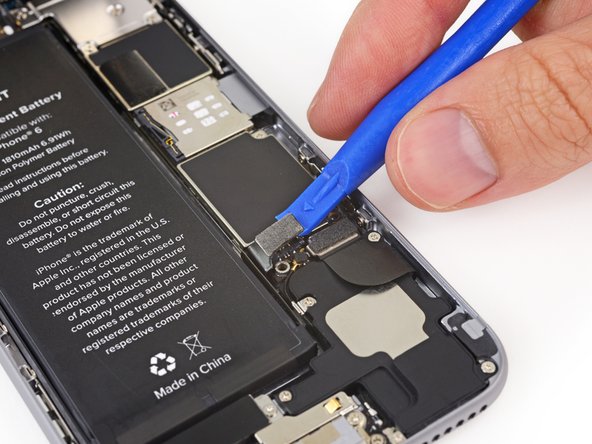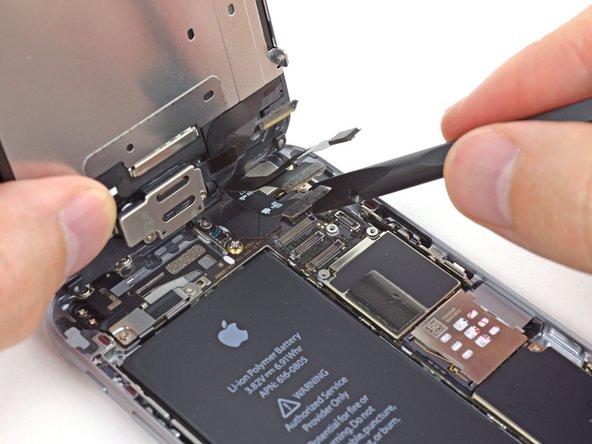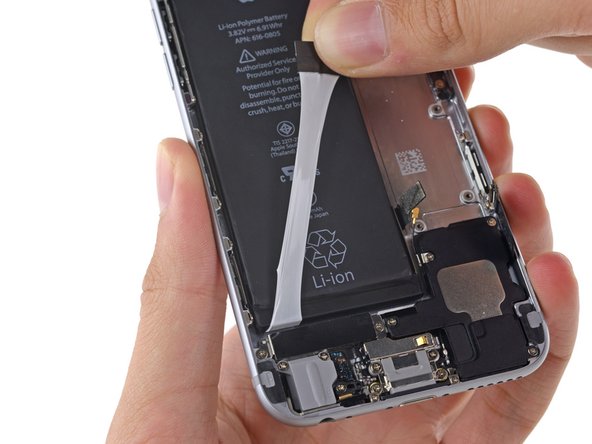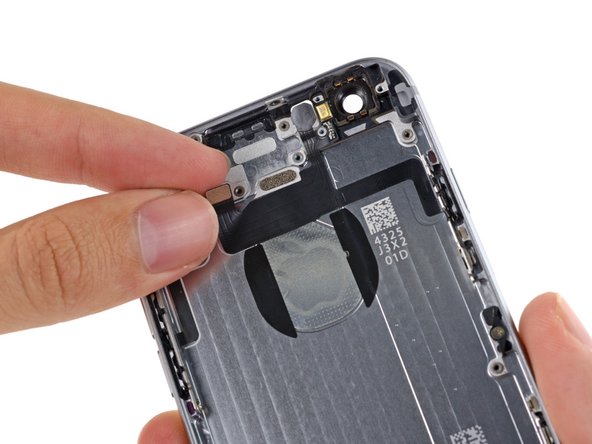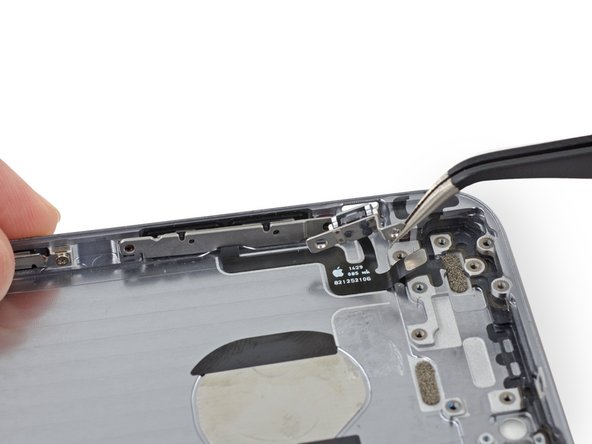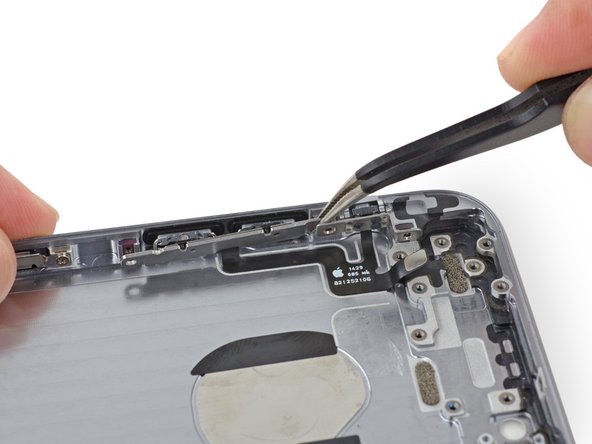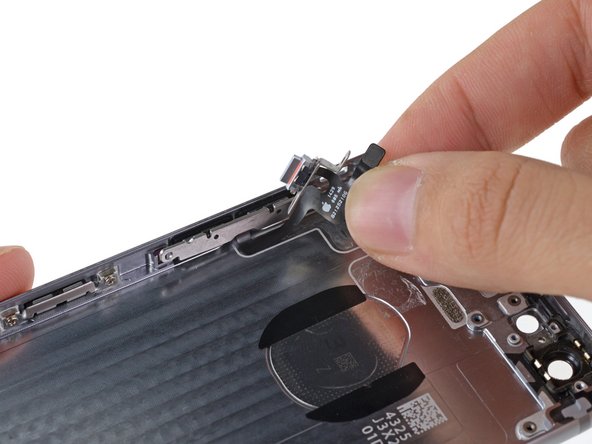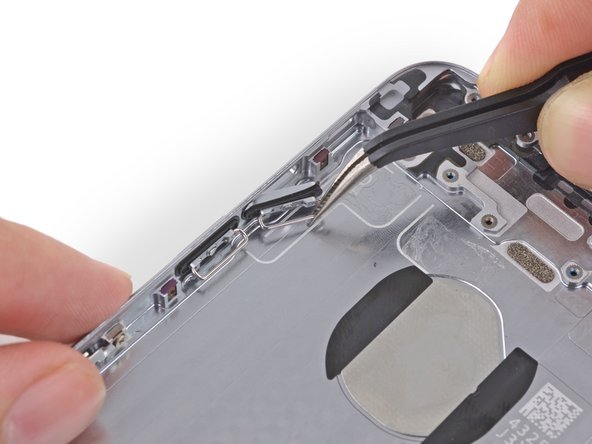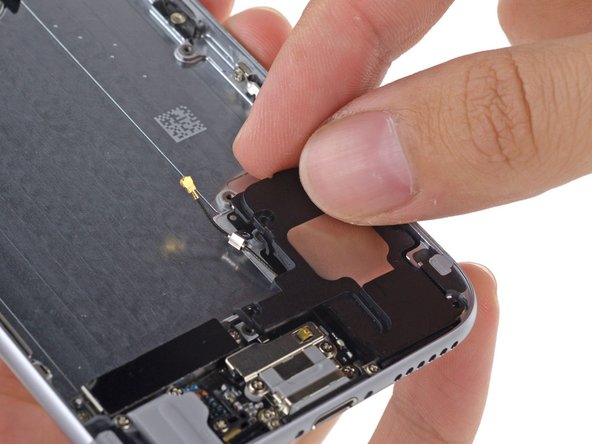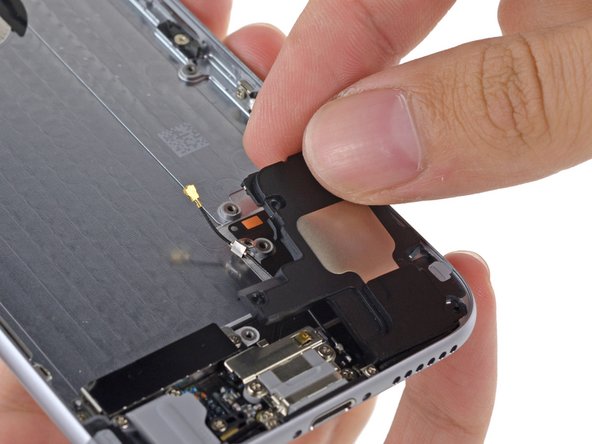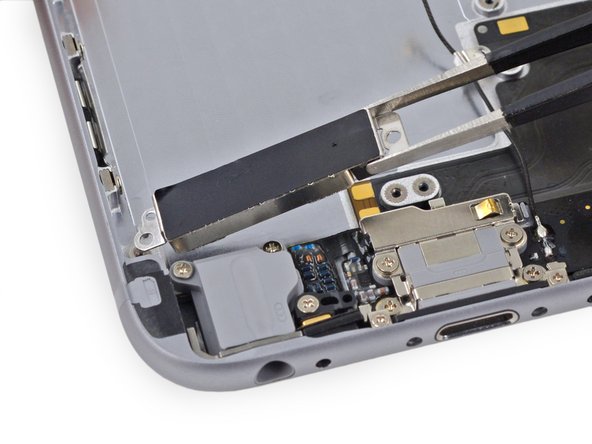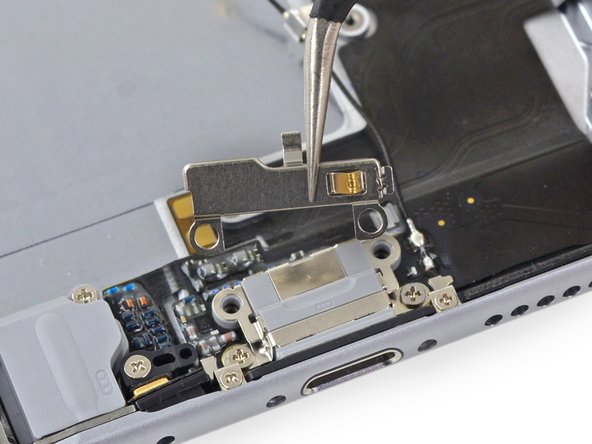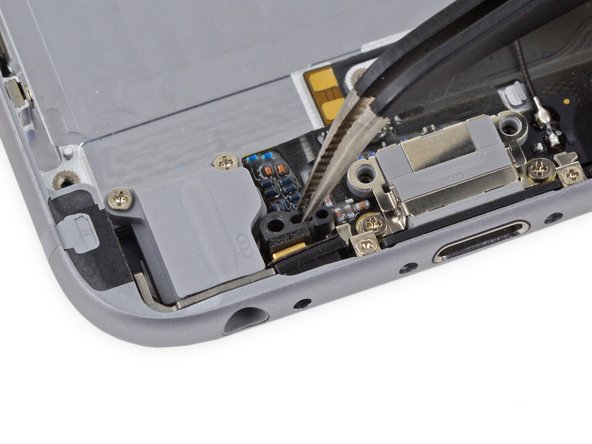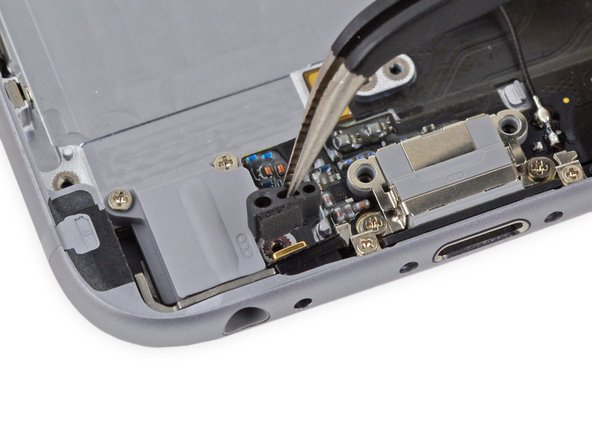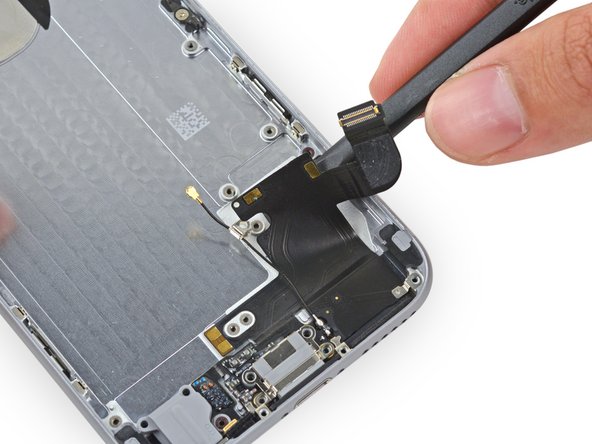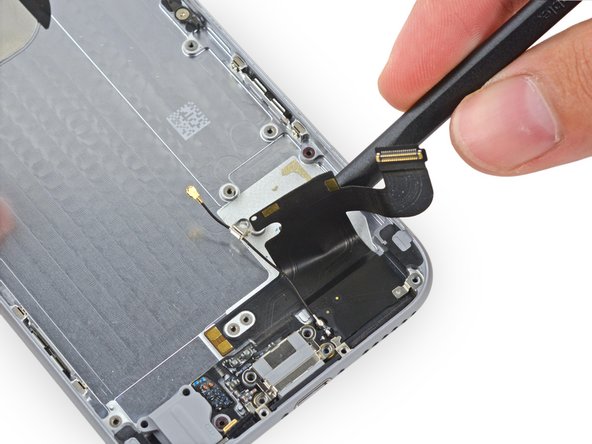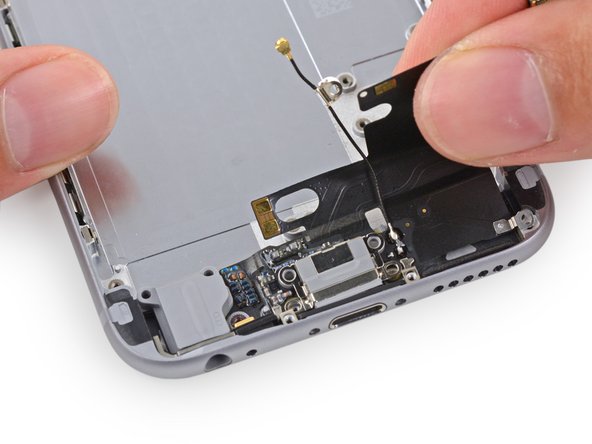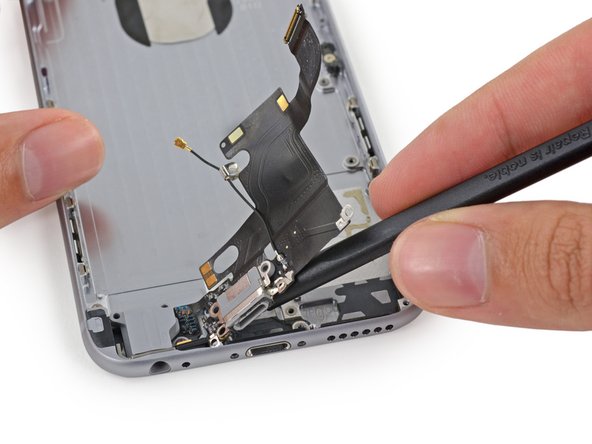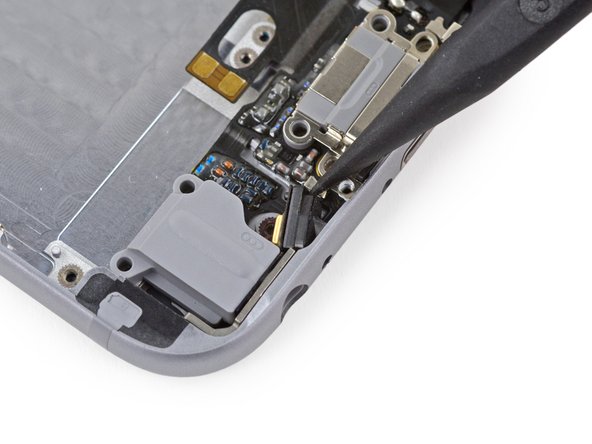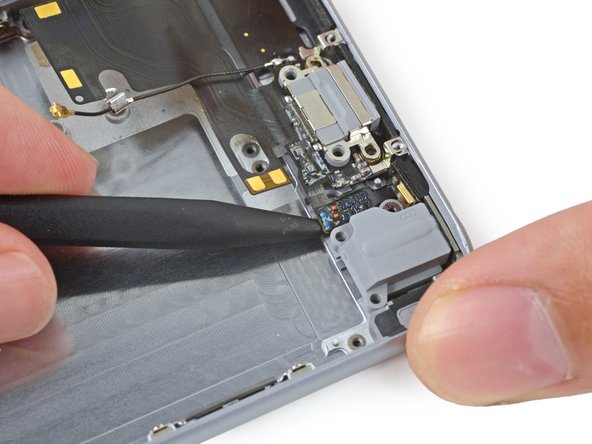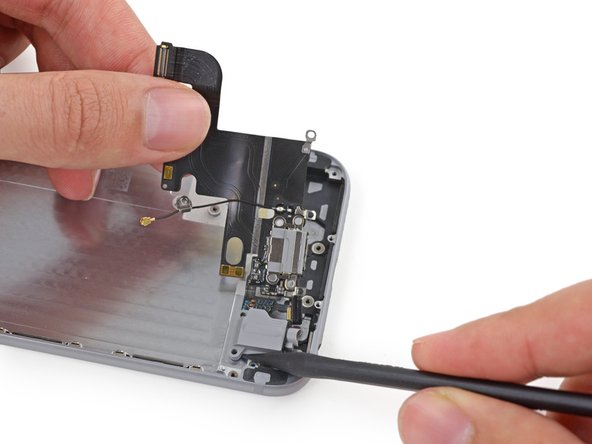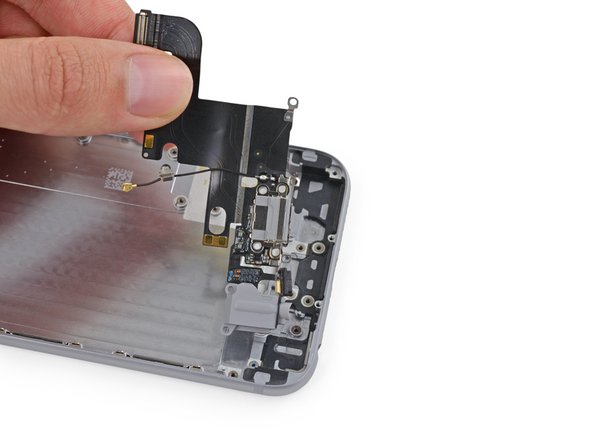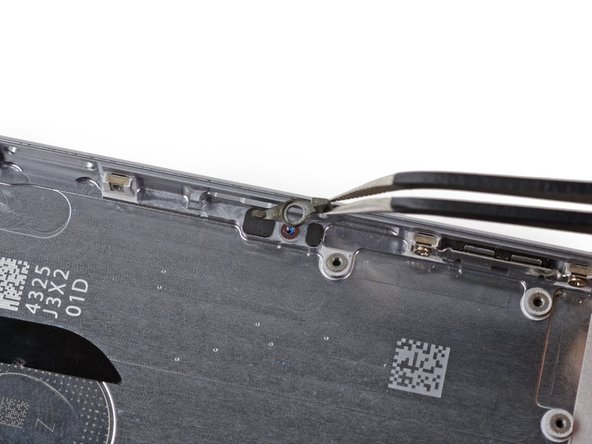Esta versão pode conter edições incorretas. Mude para o último instantâneo verificado.
O que você precisa
-
-
Remova os dois parafusos Pentalobe 3,6 mm dispostos ao lado do conector Lightning.
-
-
-
Puxe a pega azul para trás para destravar os braços do Anti-Clamp.
-
Deslize os braços pela borda esquerda ou direita do seu iPhone.
-
Posicione as ventosas próximo à borda inferior do iPhone, diretamente acima do botão home - uma pela dianteira e a outra pela traseira.
-
Aperte as ventosas uma contra a outra para aplicar sucção na área desejada.
-
-
-
Caso você não tenha uma iSclack, use somente uma ventosa de sucção para levantar o painel dianteiro:
-
Pressione uma ventosa de sucção contra a tela, na área diretamente acima do botão home.
-
-
-
Enquanto pressiona o iPhone para baixo com uma mão, puxe a ventosa de sucção para cima, de modo a separar suavemente o conjunto painel dianteiro da estrutura traseira do dispositivo.
-
Usando uma ferramenta de abertura de plástico, comece a mover vagarosamente a estrutura traseira do dispositivo para baixo enquanto continua puxando para cima o conjunto do display com a ventosa, até separá-los um do outro.
-
-
Este passo não foi traduzido. Ajude a traduzi-lo
-
Insert a SIM card eject tool or a paperclip into the small hole in the SIM card tray.
-
Press to eject the tray.
-
-
Este passo não foi traduzido. Ajude a traduzi-lo
-
Use the flat end of a spudger to disconnect the Lightning connector assembly cable and fold it out of the way of the speaker.
-
-
Este passo não foi traduzido. Ajude a traduzi-lo
-
Use the point of a spudger to lift the antenna cable connector up off of its socket on the logic board.
-
-
Este passo não foi traduzido. Ajude a traduzi-lo
-
Remove the following Phillips screws from the upper cable bracket:
-
One 2.9 mm screw
-
One 2.2 mm screw
-
-
Este passo não foi traduzido. Ajude a traduzi-lo
-
Use the flat end of a spudger to lift the power button and flash assembly cable connector up off of its socket.
-
Lift the volume control cable connector up out of its socket on the logic board.
-
-
Este passo não foi traduzido. Ajude a traduzi-lo
-
Remove the following four Phillips screws from the Wi-Fi antenna:
-
One 1.5 mm screw
-
One 1.4 mm screw
-
Two 2.1 mm screws
-
-
-
Este passo não foi traduzido. Ajude a traduzi-lo
-
Remove the two 1.6 mm Phillips screws from the grounding bracket.
-
-
Este passo não foi traduzido. Ajude a traduzi-lo
-
Remove the following Phillips screws securing the angled logic board bracket.
-
One 2.6 mm screw
-
One 1.3 mm screw, located horizontally in the upper sidewall of the iPhone.
-
-
Este passo não foi traduzido. Ajude a traduzi-lo
-
Remove the single 1.2 mm Phillips screw securing the antenna interconnect cable to the logic board.
-
-
Este passo não foi traduzido. Ajude a traduzi-lo
-
Use the point of a spudger to fold the antenna interconnect cable up out of the way of the logic board.
-
-
Este passo não foi traduzido. Ajude a traduzi-lo
-
Use the flat end of a spudger to lift the camera cable connector straight up out of its socket on the logic board.
-
Fold the camera cable up out of the way of the logic board.
-
-
Este passo não foi traduzido. Ajude a traduzi-lo
-
Remove the following screws securing the logic board to the rear case:
-
Two 1.9 mm Phillips screws
-
One 2.3 mm standoff screw
-
-
Este passo não foi traduzido. Ajude a traduzi-lo
-
Use the flat end of a spudger to lift the battery connector end of the logic board up slightly, just enough to grab with your fingers.
-
-
Este passo não foi traduzido. Ajude a traduzi-lo
-
Lift the battery connector end of the logic board and pull it up and out of the rear case.
-
-
Este passo não foi traduzido. Ajude a traduzi-lo
-
Peel back the first battery adhesive tab from the bottom right edge of the battery.
-
-
Este passo não foi traduzido. Ajude a traduzi-lo
-
Gently pull the battery adhesive tab away from the battery, toward the bottom of the iPhone.
-
Try not to pull against the battery or the lower components, or you may rip the adhesive strip.
-
Continue pulling, allowing the strip to slowly slip out from between the battery and the rear case. When you feel increased resistance from the strip, stop pulling and continue with the next step.
-
-
Este passo não foi traduzido. Ajude a traduzi-lo
-
When you feel increased resistance from the adhesive strip, pull it gently around the lower right corner of the battery.
-
Continue pulling the adhesive tab upward and away from the right edge of the battery, allowing it to slowly slide out from between the battery and the rear case, until the strip comes free from the iPhone.
-
-
Este passo não foi traduzido. Ajude a traduzi-lo
-
Peel back the second battery adhesive tab from the bottom left edge of the battery.
-
Again, gently pull the battery adhesive tab upward and away from the battery, allowing the adhesive strip to slowly slide out from between the battery and the rear case.
-
Continue pulling the adhesive tab until you feel increased resistance, and then stop.
-
-
Este passo não foi traduzido. Ajude a traduzi-lo
-
When you feel increased resistance from the adhesive strip, pull it gently around the lower left corner of the battery.
-
Continue pulling the adhesive tab upward and away from the left edge of the battery, allowing it to slowly slide out from between the battery and the rear case, until the strip comes free from the iPhone.
-
If you removed both adhesive strips successfully, skip the next two steps and continue on Step 46.
-
If either of the adhesive strips broke off underneath the battery and could not be retrieved, continue with the next step below.
-
-
Este passo não foi traduzido. Ajude a traduzi-lo
-
If any of the adhesive strips broke off and the battery remains stuck to the rear case, prepare an iOpener or use a hair dryer to heat the rear case directly behind the battery.
-
-
Este passo não foi traduzido. Ajude a traduzi-lo
-
Insert a plastic card under the logic board edge of the battery.
-
Press the card in at several points if necessary to break up the adhesive behind the battery.
-
-
Este passo não foi traduzido. Ajude a traduzi-lo
-
After peeling or prying out all adhesive, remove the battery from the iPhone.
-
-
Este passo não foi traduzido. Ajude a traduzi-lo
-
Remove any tape covering the upper left rear-facing camera screw.
-
-
Este passo não foi traduzido. Ajude a traduzi-lo
-
Remove the following Phillips #00 screws from the rear-facing camera bracket:
-
One 1.5 mm screw
-
One 2.1 mm screw
-
-
Este passo não foi traduzido. Ajude a traduzi-lo
-
Carefully remove the antenna interconnect cable from the rear case.
-
-
Este passo não foi traduzido. Ajude a traduzi-lo
-
Remove the single 1.2 mm Phillips #00 screw securing the flash bracket.
-
-
Este passo não foi traduzido. Ajude a traduzi-lo
-
Remove the two 2.2 mm Phillips #00 screws from the power button bracket.
-
-
Este passo não foi traduzido. Ajude a traduzi-lo
-
Use the point of a spudger to gently push the flash and microphone modules up out of their respective holes in the rear case.
-
-
Este passo não foi traduzido. Ajude a traduzi-lo
-
Begin to peel the flash/microphone/power button assembly cable up from the rear case starting from the connector end.
-
Continue to peel the cable up, being particularly careful of the narrow component ends of the cable.
-
Remove the flash/microphone/power button assembly cable from the phone.
-
-
Este passo não foi traduzido. Ajude a traduzi-lo
-
Grip the power button by the metal bar to pull it free from the rear case.
-
The power button is held to the case with an adhesive gasket, pull carefully to prevent ripping the membrane.
-
-
Este passo não foi traduzido. Ajude a traduzi-lo
-
Remove the following Phillips #00 screws from the volume control cable brackets:
-
Two 2.3 mm screws
-
One 1.8 mm screw
-
-
Este passo não foi traduzido. Ajude a traduzi-lo
-
Pull the hold switch and volume control button brackets away from the rear case to allow access to the button covers.
-
-
Este passo não foi traduzido. Ajude a traduzi-lo
-
Begin to peel the volume control button cable up from the rear case starting from the connector end.
-
Be gentle when peeling the thin portions of the cable up from the case.
-
Remove the volume control button cable from the rear case.
-
-
Este passo não foi traduzido. Ajude a traduzi-lo
-
Pull the volume control buttons by the metal bar to remove them from the rear case.
-
The buttons are held to the case with an adhesive gasket, pull carefully to prevent ripping the membrane.
-
-
Este passo não foi traduzido. Ajude a traduzi-lo
-
Remove the following four Phillips #00 screws securing the speaker:
-
Two 2.9 mm screws
-
Two 2.3 mm screws
-
-
Este passo não foi traduzido. Ajude a traduzi-lo
-
Use the point of a spudger to push the antenna interconnect cable clip off of the speaker housing.
-
-
Este passo não foi traduzido. Ajude a traduzi-lo
-
Remove the two 1.6 mm Phillips #00 screws securing the vibrator to the rear case.
-
-
Este passo não foi traduzido. Ajude a traduzi-lo
-
Remove the two 3.1 mm Phillips #00 screws securing the Lightning port retaining bracket.
-
-
Este passo não foi traduzido. Ajude a traduzi-lo
-
Remove the single 3.6 mm Phillips #00 shoulder screw from the microphone brace.
-
-
Este passo não foi traduzido. Ajude a traduzi-lo
-
Remove the six remaining Phillips #00 screws from the Lightning connector cable assembly:
-
Two 3.1 mm shoulder screws
-
Two 1.7 mm screws
-
Two 1.5 mm screws
-
-
Este passo não foi traduzido. Ajude a traduzi-lo
-
Use the flat end of a spudger to begin peeling the Lightning connector cable assembly up from the rear case.
-
-
Este passo não foi traduzido. Ajude a traduzi-lo
-
Carefully pull the Lightning connector cable assembly up slightly to free the it from the vibrator and speaker screw posts.
-
-
Este passo não foi traduzido. Ajude a traduzi-lo
-
Use the flat end of a spudger to lift under the Lightning connector portion of the cable assembly to free more adhesive.
-
-
Este passo não foi traduzido. Ajude a traduzi-lo
-
Use the point of a spudger to push the microphone portion of the Lightning cable assembly out of its recess in the rear case.
-
-
Este passo não foi traduzido. Ajude a traduzi-lo
-
Gently run the point of a spudger under the cable assembly between the Lightning connector and the headphone jack to free it from the last of the adhesive.
-
-
Este passo não foi traduzido. Ajude a traduzi-lo
-
Use the tip of a spudger to help guide the headphone jack out of its recess in the rear case.
-
Remove the Lightning connector cable assembly from the iPhone.
-
-
Este passo não foi traduzido. Ajude a traduzi-lo
-
Remove the single 1.7 mm Phillips #00 screw securing the SIM eject lever.
-
Cancelar: não concluí este guia.
249 outras pessoas executaram este guia.
38 comentários
My first time inside an iPhone. I slipped on some icy steps and bent my phone. Luckily it bent on the battery side and still worked except for the 'down' volume button. That wouldn't move because the housing was so deformed. Took my time and followed the guide carefully, it was absolutely fine. Took an hour and three quarters.
My issue is the glue on the battery! i destroyed my first battery saying to remove has anyone got any advice on this? thanks
I failed with both battery pull tabs, but I successfully used a microwaveable wheat bag in place of the iOpener, then carefully slid a store loyalty card under the battery. It took a bit of doing but I just took my time. The back of the battery was a bit bubbled but it still works fine.
nbuchan -
I successfully replaced my rear case but upon completion I've noticed my power and volume buttons are no longer clicky in fact they've lost all springiness. I feel like they are constantly touching the button contacts and have yet to turn the phone back on anyone have any ideas as to how to fix this?
In the middle of the volume buttons itself, on the inside is a round plate glued, you have to replace this on the new volume buttons
clbr -



















